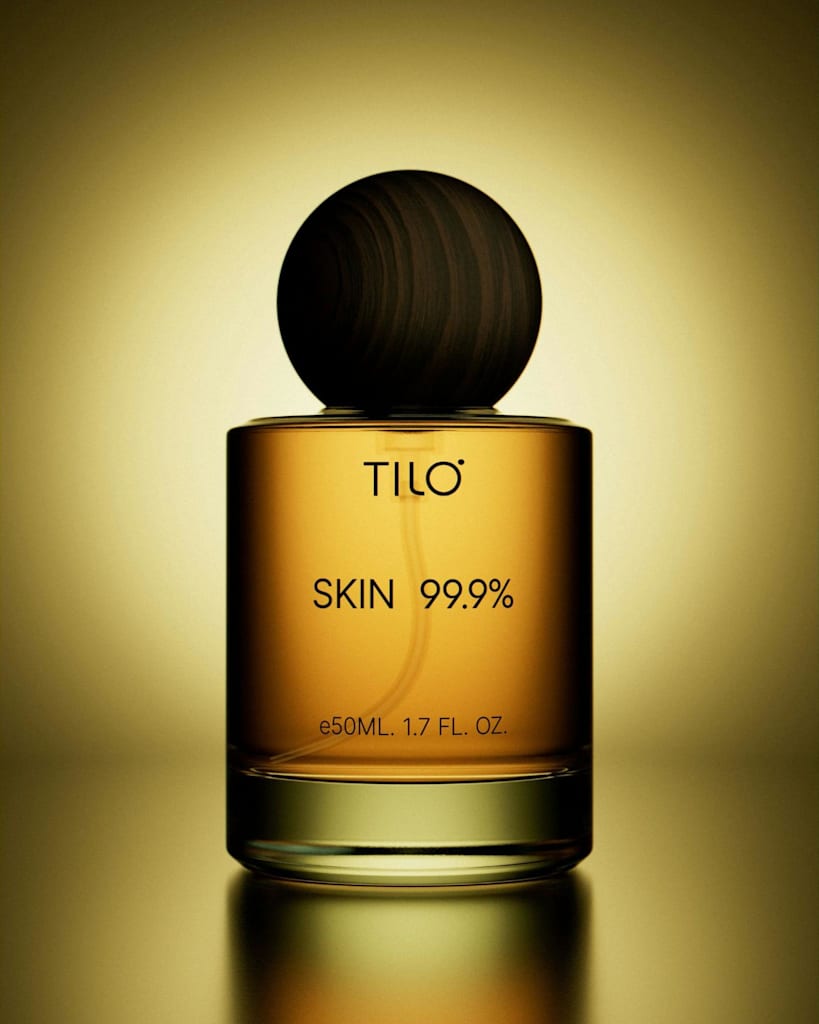Background images are commonplace in web design where they serve various purposes, including adding visual context, supporting other design elements, and enhancing the overall user experience in various applications such as websites, presentations, and more.
Many modern websites use background images to improve their website’s aesthetic appeal, create depth, set a mood or evoke emotion, or convey a specific theme for a brand. When used together with text, background images can create attention-grabbing visuals and communicate information using a specific narrative. However, achieving the perfect balance between visual appeal, readability, and performance presents challenges, such as ensuring text legibility over varied images, ensuring uniform design across devices, and optimizing images for fast delivery.
In this article, we’ll explore tips and best practices for effectively using background images with text overlays, focusing on optimization strategies and providing a practical implementation using Cloudinary and Python.
In this article:
- Advantages of Using Background Images with Text Overlay
- Implementing Background Image with Text Overlay using Cloudinary
- Best Practices for Designing a Readable and Responsive Text Overlay
Advantages of Using Background Images With Text Overlay
Using background images with text overlay offers several advantages, especially in UI/UX and marketing. For example, it helps to improve accessibility for people with visual impairment and enables clear, concise communication of key product information.
Storytelling and Emotional Connection
Images are powerful storytelling tools, capable of evoking emotions and creating captivating experiences. For example, a background image of a smiling family paired with the text “Together, We Thrive” can evoke warmth and connection for a nonprofit campaign. By carefully selecting images that align with the message and using text to reinforce the narrative, you can create an emotional bond with your audience, making the content more relatable and impactful.
Here’s an example from Oxfam Canada’s homepage. As you can see, the background image complements the text overlay which portrays the non-profits objectives and goals.
Visual Appeal and Branding
Many websites and social media posts use a well-designed background image with text overlay to create a visually captivating experience.
The image sets the tone, while the text delivers the message, creating a unified design that reinforces brand identity. For example, a luxury brand might use a sleek, high-resolution image of a product with unique typography to convey sophistication and elegance. This combination makes the information memorable and consistent with the brand’s values, creating a powerful first impression.
Puma nails this by showcasing one of their products on their landing page with a description text centered on the image. This grabs the viewer’s attention, making them stop to read and engage with the visual.
Conveying Information
Many users simply scroll through websites skimming for information, and can often miss key details. This makes it important for businesses to pass across information in a clear and concise manner.
A background image with text overlay can communicate key messages in seconds, or even grab the user’s attention and stop them from scrolling. For instance, a promotional banner on an ecommerce website with the text “50% Off Today Only!” over a vibrant product image will grab users attention and drive clicks.
In the example below, Royal Caribbean features an image of one of their cruise ships as the background of their landing page, immediately immersing visitors in the vacation experience. The image overlays a discount offer, capturing visitor’s attention and highlighting the value proposition. The clear and compelling “SHOP NOW” call-to-action also encourages users to take immediate steps toward booking, effectively driving conversions for the cruise line.
Implementing Background Image with Text Overlay using Cloudinary
Cloudinary is an Image and Video API platform that simplifies media management, including transforming images for creating and delivering background images with text overlays. Imagine a scenario where you’re running an ecommerce website and need to add descriptive text overlays to a hundred product images–doing this manually just doesn’t work.
They provide SDKs that allow you to programmatically manipulate images and add text over them as layers, automating the process for you and fitting seamlessly into your workflow. Let’s explore how you can use the Cloudinary Python SDK to add text overlays on images.
Set up Cloudinary
To interact with the Cloudinary API, you’ll need your account credentials (API key, API secret, and cloud name), which you can get from your Cloudinary dashboard after you sign up for a free account.
First, create a .env file with the credentials as follows to set the environment variables:
CLOUDINARY_CLOUD_NAME='YOUR_CLOUDINARY_CLOUD_NAME' CLOUDINARY_API_KEY='YOUR_CLOUDINARY_API_KEY' CLOUDINARY_API_SECRET='YOUR_CLOUDINARY_API_SECRET'
Next, install the Cloudinary Python SDK and python-dotenv (for managing environment variables) using pip:
pip install cloudinary python-dotenv
Upload Image to Cloudinary and Add text Overlay
Next, we’ll upload an image to Cloudinary and add the text overlay programmatically. Let’s use the image below as an example:

Image by Pavlo Talpa on Unsplash.
Let’s say you are an ecommerce brand and you want to add a text that shows the product is currently selling at a discount. Here’s how you’d do that. Create a main.py file and add the following code to it:
import cloudinary
import cloudinary.uploader
import cloudinary.api
from cloudinary.utils import cloudinary_url
import os
from dotenv import load_dotenv
# Load environment variables from the .env file
load_dotenv()
# Access environment variables
cloudinary_cloud_name = os.getenv("CLOUDINARY_CLOUD_NAME")
cloudinary_api_key = os.getenv("CLOUDINARY_API_KEY")
cloudinary_api_secret = os.getenv("CLOUDINARY_API_SECRET")
cloudinary.config(
cloud_name = cloudinary_cloud_name,
api_key = cloudinary_api_key,
api_secret = cloudinary_api_secret
)
# Step 1: Upload the image to Cloudinary and return its public_id
def upload_image(file_path):
try:
upload_result = cloudinary.uploader.upload(
file_path,
resource_type="image"
)
public_id = upload_result.get("public_id")
print(f"Image uploaded successfully")
return public_id
except Exception as e:
print(f"Error uploading image: {e}")
return None
# Step 2: Add text overlay to the image
def add_text_overlay(public_id):
transformed_url, _ = cloudinary_url(
public_id,
fetch_format="png",
quality="auto",
color="white",
overlay={
"font_family": "Arial",
"font_size": 100,
"text": "Now available at 30% off!",
"font_weight": "bold",
},
flags="layer_apply",
gravity="south_east",
x="80",
y="90",
)
return transformed_url
# Upload an image
image_path = "product-image.jpg" # Replace with your image path
uploaded_id = upload_image(image_path)
print(add_text_overlay(uploaded_id))
Let’s go through how the code works.
- The first few lines of the code imports the necessary Cloudinary modules and
dotenvto configure your Cloudinary credentials for API access. - The
upload_imagefunction uploads the image to Cloudinary usingcloudinary.uploader.upload, and returns the image’spublic_id. - The
add_text_overlayfunction generates a URL for the uploaded image with a text overlay. We then pass transformation parameters to thecloudinary_urlmethod, includinggravity(which sets the positioning), andxandyvalues for the offsets. You can try out this interactive tool to see how gravity positioning works in Cloudinary.
When you run the code, it’ll return the URL of the image with the text overlay:
http://res.cloudinary.com/cloudinarymich/image/upload/co_white,f_png,fl_layer_apply,g_south_east,l_text:Arial_100_bold:Now%20available%20at%2030%25%20off%21,q_auto,x_80,y_90/bsaahemt96duuzuwbyai

While the above example provides a quick introduction to Cloudinary’s capabilities for layering text on images, you can enhance text overlays by applying CSS-like styling parameters, such as custom fonts, line breaks, special characters, and more. To learn about adding layers (e.g., text or images) to images, take a look at Cloudinary’s documentation.
Best Practices for Designing a Readable and Responsive Text Overlay
When you put text on top of an image, it’s important to make sure your design is easy to read, works well on all devices, and is accessible to everyone. It’s very easy to mess up the user experience or negatively impact the performance of your website when you use text overlays without careful planning.
Accessibility
When layering text on an image, accessibility is unarguably the first factor to consider. This means making sure your text is readable for everyone, including people with visual impairments or those who use screen readers.
- Maintain High Contrast Between the Image and Text: The text color you use should be very different from the image color behind it. This helps to guide the viewer’s eye to the important part of the image, which is the text layered on top of it. Aim for strong contrasts, like dark text on a light image, or light text on a dark image.
- Don’t Rely Solely on Color: While contrast is important, don’t use color as the only way to convey information. For example, if you’re highlighting a word, don’t just make it red. Also make it bold or underline it. This helps people who are colorblind.
- Provide Alt Text for Images: Provide descriptive alt text for the background image to ensure users with screen readers understand the context of the visual content.
- Use Proper Font Type, Size, and Weight: Use a legible font type and a font size that’s big enough to be easily read. Don’t use tiny, squished text. Also, consider the font weight–a bold font might be more readable than a very thin one, especially against an image.
Use the Right Image
The image you choose matters a lot when adding text on top of it. A busy or detailed image can make the text hard to read. To improve readability:
- Use an image that complements the text overlay: Use an image that supports the text overlay. Don’t use the image of a fast car on a non-profit website or a picture of a serene landscape on a high-energy fitness site. The image should align with the message and tone of the text to create a cohesive and impactful design.
- Avoid images with too many colors or elements: Complex images with vibrant colors or intricate patterns can cause text to blend in or become illegible. Use simpler images with uniform backgrounds where possible.
- Optimize the background image: Large file sizes can slow down loading times on landing pages, causing text overlays to appear over a blank space, which looks unprofessional. Compress images (e.g., use formats like JPEG or WebP) and aim for file sizes under 1 MB without sacrificing quality to ensure fast loading and consistent display.
Test the Design on Multiple Devices
To ensure consistency and a better user experience, test the design across desktops, tablets, and smartphones to verify responsiveness. You can also use browser developer tools like BrowserStack to simulate different devices and browsers to confirm that the text doesn’t shrink excessively or get obscured by the background image on smaller screens.
Monitor Performance and User Metrics
Even if your design looks good, it’s important to see how users are interacting with it. For example, if you place a CTA button on a background and you notice you’re not getting clicks or if users leave your website quickly, they might have trouble reading your content. This data can help you fine-tune the design for the best readability and user experience.
Delivering Faster, Smarter, and More Engaging Visual Experiences
By carefully selecting images, designing readable text, and optimizing media delivery, you can enhance user experience while maintaining performance. In this article, we explored how adding text overlays to images offers a powerful way to create engaging, visually appealing content that conveys messages effectively.
Make your website mobile-friendly with Cloudinary’s responsive images and video conversion. Sign up for free today!





